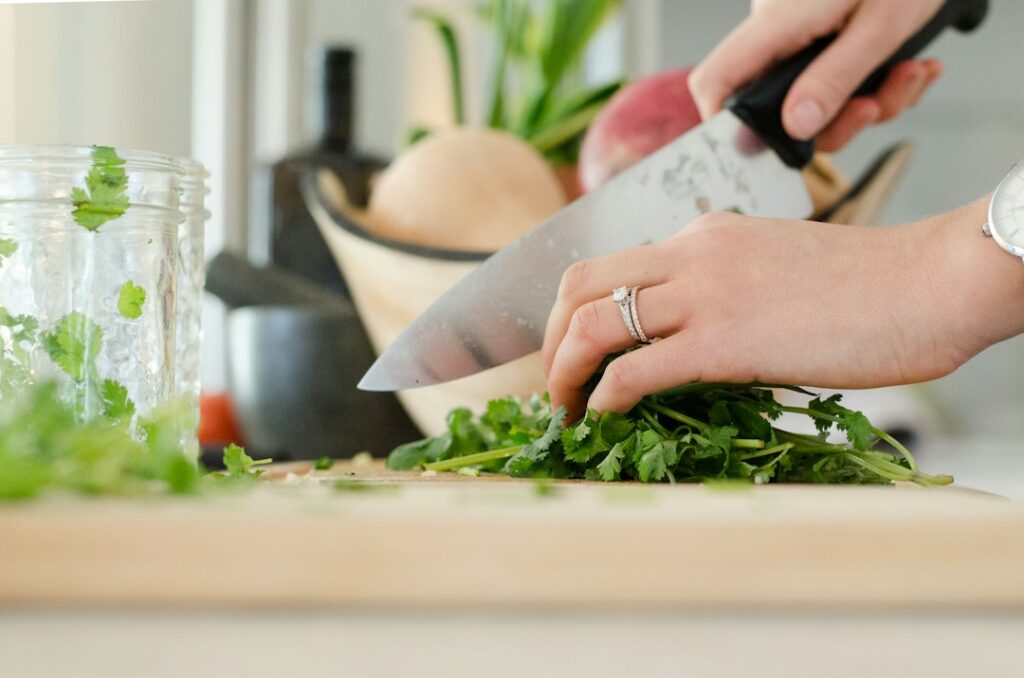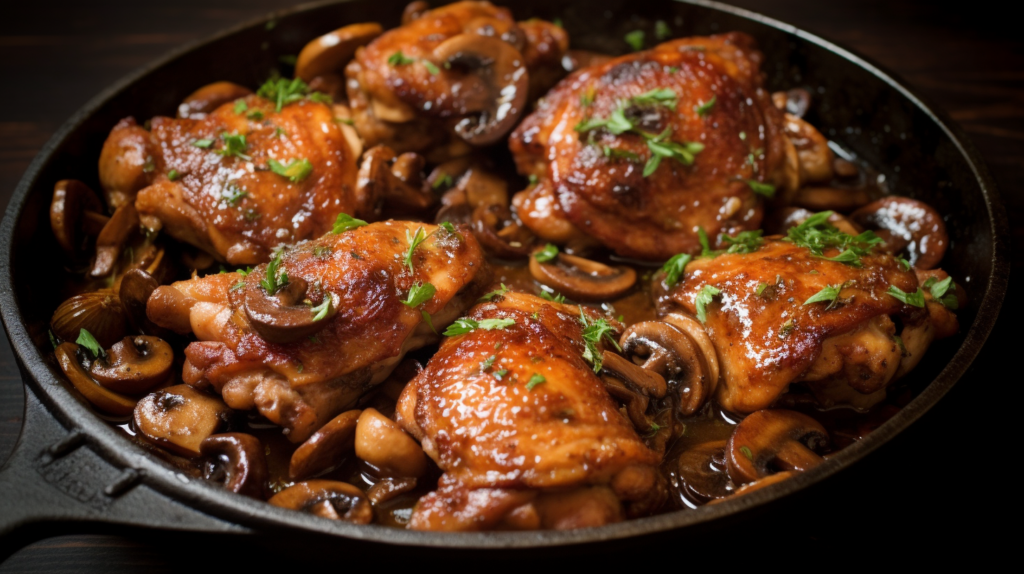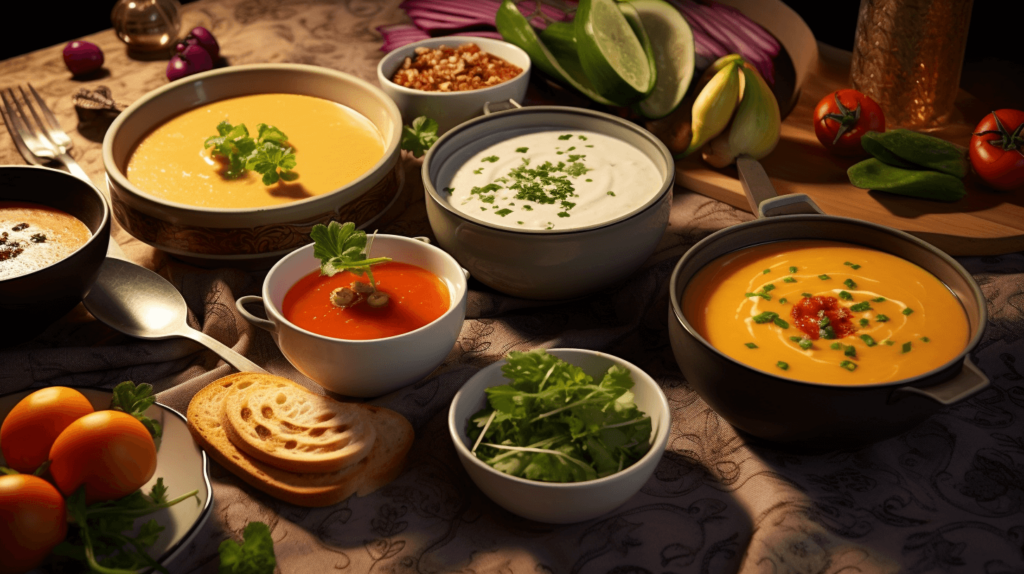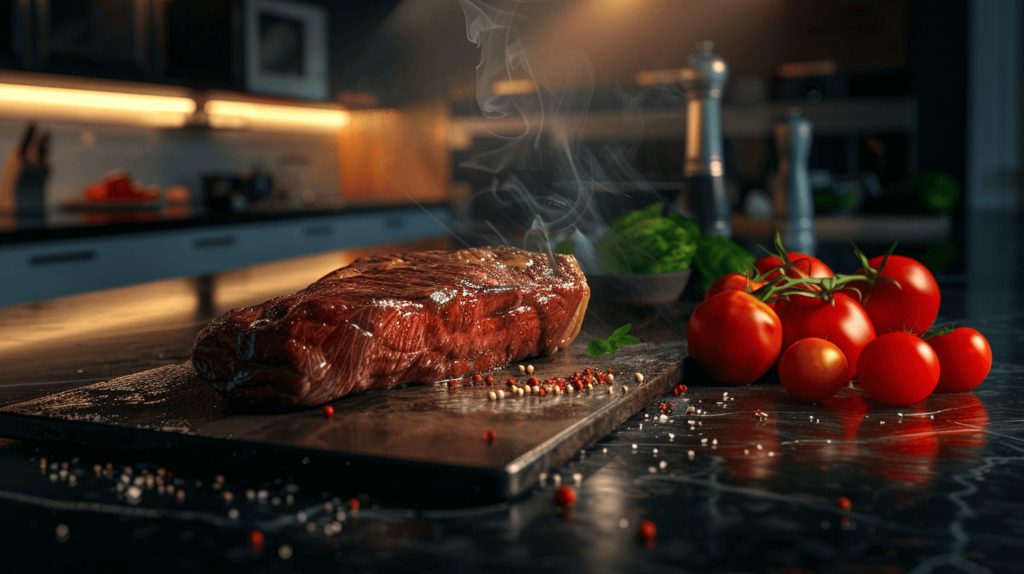Slow cooking beef is a popular cooking method that involves cooking beef at a low temperature over a long period of time. This method allows the beef to become tender and flavorful, as the slow cooking process breaks down the tough fibers in the meat and allows the flavors to meld together. Slow cooking beef is often used to make dishes such as stews, pot roasts, and braised meats.
One of the reasons why slow cooking beef is so popular is because it is a convenient and easy way to prepare a delicious meal. Once you have prepared the ingredients and set them in the slow cooker or Dutch oven, you can leave it to cook for several hours without having to constantly monitor it. This makes it a great option for busy individuals or families who want to enjoy a home-cooked meal without spending a lot of time in the kitchen.
Choosing the Right Cut of Beef for Slow Cooking
When it comes to slow cooking beef, not all cuts are created equal. Some cuts are better suited for slow cooking because they have more connective tissue and fat, which helps to keep the meat moist and tender during the long cooking process. These cuts are often referred to as “tough cuts” because they come from muscles that are used more frequently by the animal, resulting in tougher meat.
Some of the best cuts of beef for slow cooking include chuck roast, brisket, short ribs, and shank. These cuts are marbled with fat and have a lot of connective tissue, which breaks down during the slow cooking process and results in tender, flavorful meat. It’s important to note that leaner cuts of beef, such as sirloin or tenderloin, are not ideal for slow cooking as they can become dry and tough.
When selecting a cut of beef for slow cooking, look for meat that is well-marbled with fat and has a good amount of connective tissue. This will ensure that the meat stays moist and tender during the long cooking process. Additionally, choose cuts that are uniform in size so that they cook evenly.
Preparing Beef for Slow Cooking: Marinating and Seasoning
Marinating and seasoning beef before slow cooking is an important step that helps to enhance the flavor of the meat. Marinating involves soaking the beef in a mixture of liquids and seasonings, which helps to tenderize the meat and infuse it with flavor. Seasoning, on the other hand, involves adding dry spices and herbs to the meat to enhance its taste.
When marinating beef for slow cooking, it’s important to choose a marinade that complements the flavors of the dish you are making. For example, if you are making a Mexican-inspired dish, you might use a marinade made with lime juice, garlic, cumin, and chili powder. If you are making an Asian-inspired dish, you might use a marinade made with soy sauce, ginger, garlic, and sesame oil.
To marinate beef for slow cooking, place the meat in a resealable plastic bag or a shallow dish and pour the marinade over it. Make sure that the meat is fully submerged in the marinade and then refrigerate it for at least 4 hours or overnight. This will allow the flavors to penetrate the meat and make it more tender.
In addition to marinating, seasoning the beef before slow cooking is also important for maximum flavor. You can season the beef with a variety of spices and herbs, such as salt, pepper, garlic powder, onion powder, paprika, thyme, rosemary, or any other seasonings that you prefer. Rub the seasonings onto the meat before placing it in the slow cooker or Dutch oven.
Slow Cooking Beef: Temperature and Timing Guidelines
When it comes to slow cooking beef, it’s important to cook it at the right temperature and for the right amount of time to ensure that it becomes tender and flavorful. The ideal temperature for slow cooking beef is between 200-250°F (93-121°C). This low temperature allows the meat to cook slowly and evenly, resulting in tender, juicy meat.
The cooking time for slow cooking beef will vary depending on the cut of meat and the recipe you are using. As a general guideline, you can expect to cook beef for about 8-10 hours on low heat or 4-6 hours on high heat. However, it’s important to note that these times are just estimates and may need to be adjusted based on your specific recipe and the size of the meat.
To determine if the beef is done cooking, you can use a meat thermometer to check the internal temperature. For most cuts of beef, the internal temperature should reach at least 145°F (63°C) for medium-rare or 160°F (71°C) for medium. However, for slow cooked beef, you may want to cook it until it reaches a higher internal temperature, such as 180°F (82°C), to ensure that it becomes tender.
Slow Cooking Beef: Using a Slow Cooker vs. Dutch Oven
When it comes to slow cooking beef, there are two main methods that are commonly used: using a slow cooker or using a Dutch oven. Both methods have their pros and cons, so it’s important to choose the one that works best for you and your cooking preferences.
A slow cooker, also known as a crockpot, is an electrical appliance that is specifically designed for slow cooking. It consists of a ceramic or porcelain pot that sits inside a heating element. The pot is covered with a lid, which helps to trap in moisture and heat during the cooking process.
One of the main advantages of using a slow cooker is that it is very convenient and easy to use. You simply place the ingredients in the pot, set the desired temperature and cooking time, and let it cook. Slow cookers also have the advantage of being able to cook food unattended, which makes them a great option for busy individuals or families.
On the other hand, a Dutch oven is a heavy, cast-iron or enameled pot that is used for slow cooking on the stovetop or in the oven. Dutch ovens are known for their excellent heat retention and distribution, which allows for even cooking. They also have the advantage of being able to go from stovetop to oven, which makes them versatile for different cooking methods.
One of the main advantages of using a Dutch oven is that it allows for more control over the cooking process. You can easily adjust the heat and monitor the progress of the dish as it cooks. Additionally, Dutch ovens are great for browning meat before slow cooking, as they can be used on the stovetop.
Slow Cooking Beef: Adding Vegetables and Other Ingredients

Adding vegetables and other ingredients to slow cooked beef can help to enhance the flavor and make it a complete meal. When it comes to adding vegetables, it’s important to choose ones that can withstand the long cooking process without becoming mushy or overcooked.
Some vegetables that work well in slow cooked beef dishes include carrots, potatoes, onions, celery, bell peppers, and mushrooms. These vegetables hold up well during the long cooking process and add flavor and texture to the dish. You can either add them at the beginning of the cooking process or towards the end, depending on how soft you want them to be.
In addition to vegetables, you can also add other ingredients such as herbs, spices, broth, wine, or tomato sauce to enhance the flavor of your slow cooked beef. These ingredients can be added at the beginning of the cooking process or towards the end, depending on the recipe you are using.
When adding vegetables and other ingredients to slow cooked beef, it’s important to consider the cooking time and adjust accordingly. Vegetables that cook quickly, such as peas or spinach, should be added towards the end of the cooking process to prevent them from becoming overcooked. On the other hand, vegetables that take longer to cook, such as potatoes or carrots, can be added at the beginning.
Slow Cooking Beef: Tips for Achieving Maximum Flavor
When it comes to slow cooking beef, there are several tips and techniques that can help you achieve maximum flavor. Here are a few tips to keep in mind:
1. Brown the meat before slow cooking: Browning the meat before slow cooking helps to develop a rich, caramelized flavor and adds depth to the dish. You can brown the meat in a hot skillet or in the Dutch oven before adding the other ingredients.
2. Layer flavors: To achieve a more complex taste, consider layering flavors by adding different ingredients at different stages of the cooking process. For example, you can add onions and garlic at the beginning for a base flavor, then add herbs and spices towards the end for a burst of freshness.
3. Use homemade stock or broth: Using homemade stock or broth instead of store-bought can greatly enhance the flavor of your slow cooked beef. Homemade stock is richer and more flavorful, and it allows you to control the amount of salt and seasonings.
4. Taste and adjust seasonings: Throughout the cooking process, taste the dish and adjust the seasonings as needed. Slow cooking can sometimes dull flavors, so adding a bit more salt, herbs, or spices towards the end can help to bring out the flavors.
5. Let it rest: After slow cooking beef, it’s important to let it rest for a few minutes before serving. This allows the juices to redistribute and the flavors to meld together. Resting also helps to make the meat more tender and juicy.
Slow Cooking Beef: Resting and Serving
Resting and serving slow cooked beef is an important step that helps to ensure maximum flavor and tenderness. When the beef is done cooking, remove it from the slow cooker or Dutch oven and let it rest for about 10-15 minutes before slicing or shredding.
Resting allows the juices in the meat to redistribute, which helps to keep it moist and tender. It also allows the flavors to meld together, resulting in a more flavorful dish. During this time, you can also skim off any excess fat from the surface of the cooking liquid, if desired.
After resting, you can slice or shred the beef, depending on your recipe. If you are making a pot roast or braised meat dish, you can slice the beef into thick slices. If you are making a stew or shredded beef dish, you can use two forks to shred the meat into smaller pieces.
When serving slow cooked beef, you can serve it as is or with a side of vegetables, rice, pasta, or bread. The cooking liquid can be strained and used as a sauce or gravy to drizzle over the meat and other ingredients.
Beef Recipe Tips: Slow Cooked Beef Stew, Pot Roast, and More
Slow cooked beef can be used in a variety of delicious recipes, including beef stew, pot roast, braised short ribs, shredded beef tacos, and more. Here are a few recipe tips to help you get started:
1. Slow Cooked Beef Stew: For a classic beef stew, use chuck roast or stew meat and add vegetables such as carrots, potatoes, onions, and celery. Season with herbs such as thyme and rosemary, and cook on low heat for 8-10 hours or high heat for 4-6 hours.
2. Slow Cooked Pot Roast: For a tender and flavorful pot roast, use a chuck roast or brisket and season with salt, pepper, garlic powder, and onion powder. Brown the meat in a hot skillet before adding it to the slow cooker with onions, carrots, potatoes, and beef broth. Cook on low heat for 8-10 hours or high heat for 4-6 hours.
3. Braised Short Ribs: For melt-in-your-mouth short ribs, season the meat with salt, pepper, garlic powder, and paprika. Brown the meat in a hot skillet before transferring it to a Dutch oven with onions, carrots, celery, red wine, and beef broth. Braise in the oven at 325°F (163°C) for 2-3 hours or until the meat is tender.
4. Shredded Beef Tacos: For flavorful shredded beef tacos, season a chuck roast with salt, pepper, cumin, chili powder, garlic powder, and onion powder. Place the meat in a slow cooker with onions, garlic, beef broth, and canned tomatoes. Cook on low heat for 8-10 hours or high heat for 4-6 hours. Shred the meat with two forks and serve in tortillas with your favorite toppings.
Perfecting Your Slow Cooking Beef Techniques: Troubleshooting Common Issues
While slow cooking beef is generally a straightforward process, there are some common issues that can arise. Here are a few tips for troubleshooting these issues and improving your slow cooking techniques:
1. Dry or tough meat: If your slow cooked beef turns out dry or tough, it may be because you cooked it for too long or at too high of a temperature. Adjust the cooking time and temperature based on your specific recipe and the size of the meat.
2. Lack of flavor: If your slow cooked beef lacks flavor, it may be because you didn’t season it enough or didn’t use enough herbs and spices. Taste the dish throughout the cooking process and adjust the seasonings as needed.
3. Excess fat: If your slow cooked beef has too much fat, you can skim off the excess fat from the surface of the cooking liquid before serving. You can also refrigerate the dish overnight and remove the solidified fat from the top.
4. Overcooked vegetables: If your vegetables become mushy or overcooked during the slow cooking process, consider adding them towards the end of the cooking time or using firmer vegetables that can withstand the long cooking process.
5. Adjusting recipes: When adapting recipes for different cuts of beef, consider the cooking time and adjust accordingly. Tougher cuts of beef will require a longer cooking time to become tender, while leaner cuts will require a shorter cooking time to prevent them from becoming dry.
By following these tips and techniques, you can perfect your slow cooking beef skills and create delicious, tender, and flavorful dishes every time. Whether you’re making a hearty beef stew, a succulent pot roast, or tender braised short ribs, slow cooking beef is a versatile and convenient method that will impress your family and friends. So grab your slow cooker or Dutch oven and get ready to enjoy a delicious home-cooked meal that will warm your soul.
If you’re a fan of slow cooking beef, you’ll love this article on Relish the Daily that features a delicious recipe for Easy Moroccan Stuffed Eggplant. Slow cooking allows the flavors to meld together and results in tender, flavorful meals. This recipe takes it up a notch with the addition of Moroccan spices and hearty eggplant. Check out the article here for step-by-step instructions and tips on how to make this mouthwatering dish.





